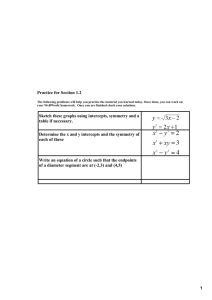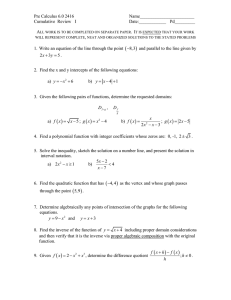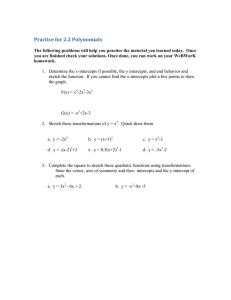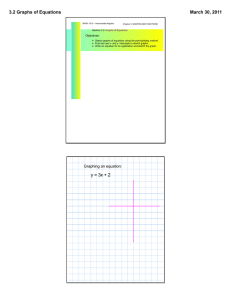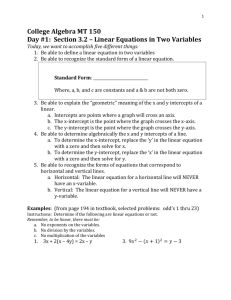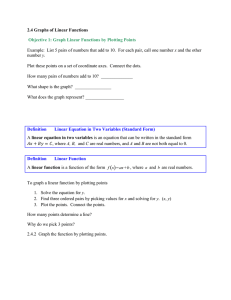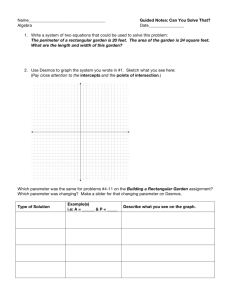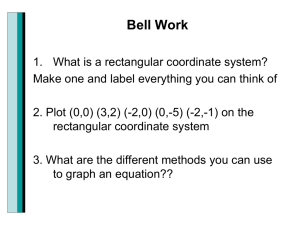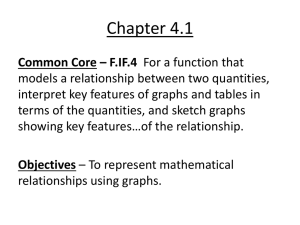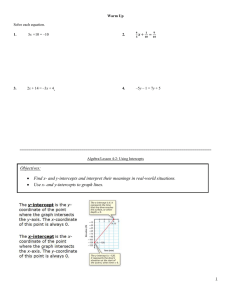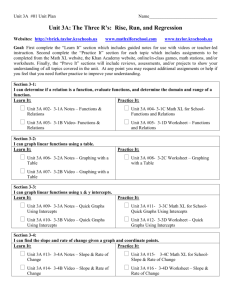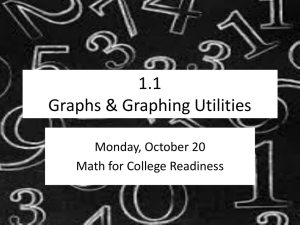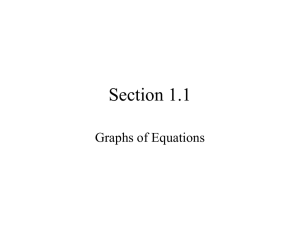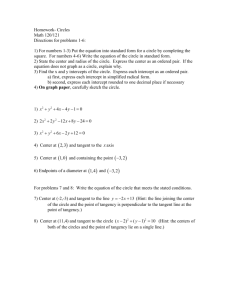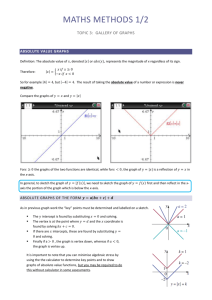1.1--Graphs and Graphing Utilities
advertisement
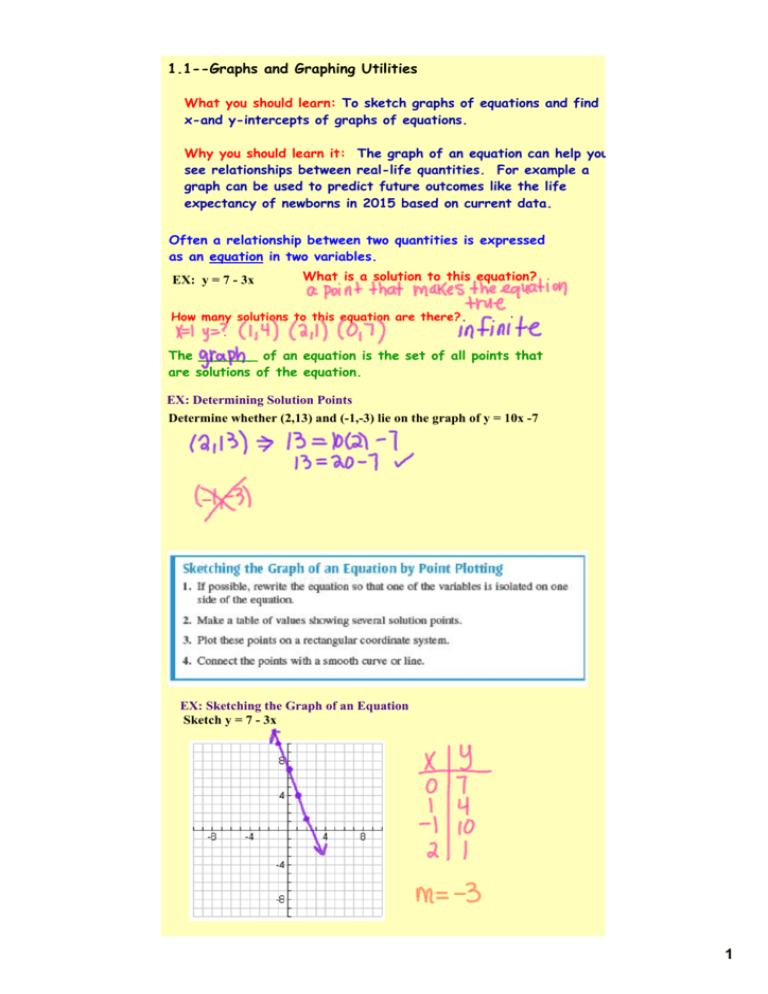
1.1--Graphs and Graphing Utilities What you should learn: To sketch graphs of equations and find x-and y-intercepts of graphs of equations. Why you should learn it: The graph of an equation can help you see relationships between real-life quantities. For example a graph can be used to predict future outcomes like the life expectancy of newborns in 2015 based on current data. Often a relationship between two quantities is expressed as an equation in two variables. EX: y = 7 ­ 3x What is a solution to this equation? How many solutions to this equation are there? The _______ of an equation is the set of all points that are solutions of the equation. EX: Determining Solution Points Determine whether (2,13) and (­1,­3) lie on the graph of y = 10x ­7 EX: Sketching the Graph of an Equation Sketch y = 7 ­ 3x 1 EX: Sketch the graph of y = x2 ­2 What kind of equation is this? The table-point-plotting technique is easy but it has some shortcomings. With too few points plotted, you can badly misrepresent the graph of the equation. The four plots we plotted could also be points on the given graphs. Intercepts of a Graph Intercept---point at which the graph intersects the xor y-axis. Is is possible for a graph to have more than one intercept? No intercepts? 2 EX: Finding x­ and y­Intercepts Find they x­and y­intercepts for the graph of each equation. HW : WS 3
